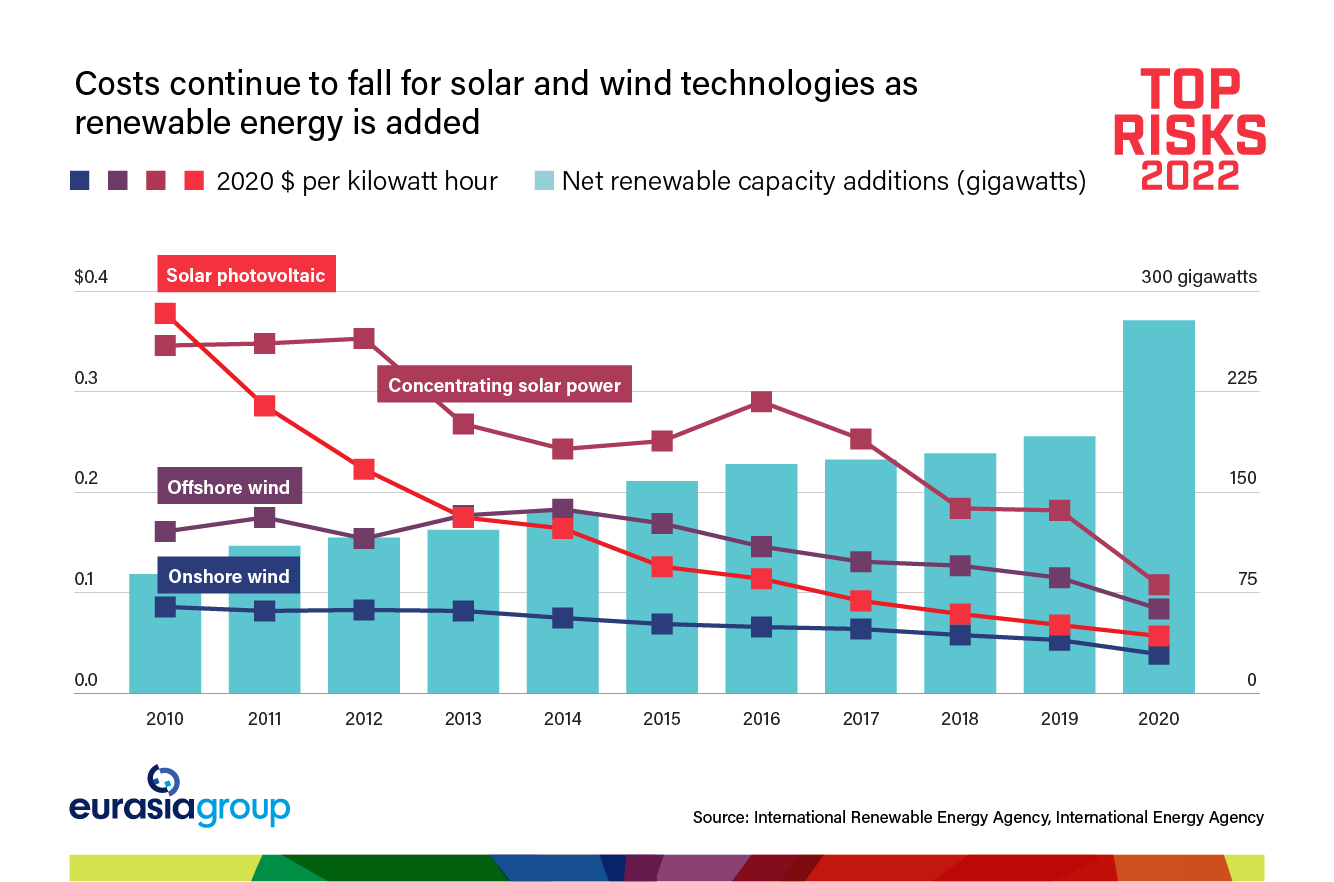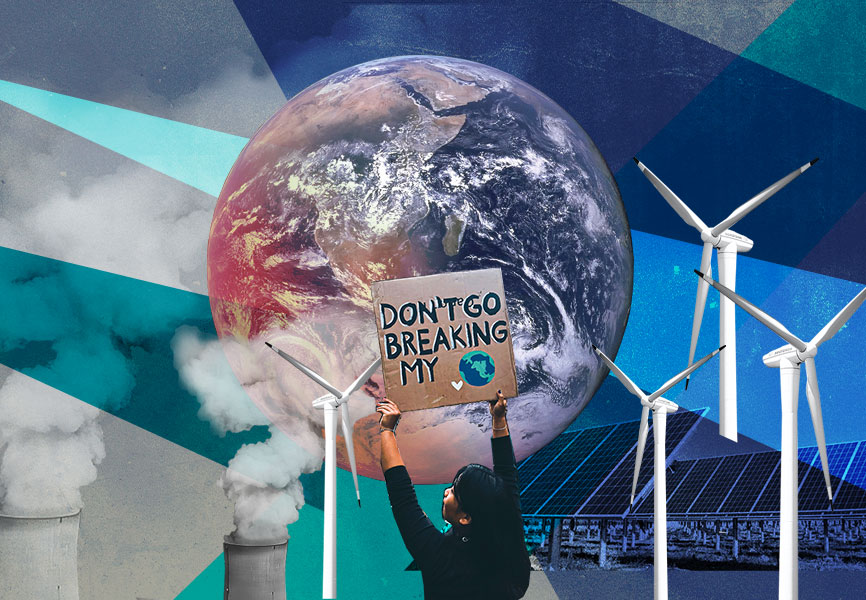It's an especially disruptive time in the global transition from fossil fuels to renewables. The result will be both higher energy prices for consumers and a near-term policy collision with climate goals.
In 2022, long-term decarbonization targets will collide with short-term energy needs. We saw this last year as governments raced to make mid-century net-zero commitments but then took a detour toward subsidies and other policy interventions as economic distortions created by Covid-19 and supply chain disruptions created energy shortages. This upward pressure on costs will intensify in 2022 and force governments to make an unpleasant choice: mollify anxious voters with policy that delays climate goals or tough it out in a hostile and unpredictable energy market environment.
Energy demand, production, and investment will remain out of sync this year as the transition to a global economy powered by renewable energy sources gains traction. Near term, economies are trying to squeeze fossil fuels out of their energy mixes without generating enough investment in renewable replacements or backup solutions. Making matters worse, leaders such as Putin have used their leverage to disrupt energy markets many times in the past. The tension between green goals and the need to keep energy costs down will prove politically toxic this year, with rising energy costs, greater price volatility, and mounting pressure on consumers to change their behavior.
The energy transition is happening, but it won't be smooth.
The dynamic set at the UN climate summit in Glasgow tells the story. Climate goals were expanded in the run-up to COP26 as the coverage of net zero commitments grew from 30% to 90% of the global economy. Details remain scarce on how countries will reach net zero, however, with COP27 looming in November. The Glasgow Climate Pact also included language on phasing out coal and reducing “inefficient” fossil fuel subsidies that are at odds with government responses to the current energy crisis, both in Europe and Asia. Authorities must square long-term climate goals with the need to meet today's energy needs, a difficult-to-impossible task.
Finally, severe weather events will simultaneously cause outages and stoke higher demand for energy globally. They will also force hasty political decisions on climate actions that exacerbate energy distortions.

The economic impact will be felt this year. The surge in retail and wholesale energy costs in late 2021 will undermine economic growth prospects for large parts of Europe and Northeast Asia well into 2022. As China continues with its massive household gasification program, its demand for gas will continue to rise, driving up prices seasonally and creating new supply shortages that once again force it to ration power deliveries to industry next winter. The US is also likely to experience continued high natural gas prices as investment in the unconventional sector is stymied by a combination of bearish investor sentiment and unclear policy signals from the Biden administration. These rising energy costs will stoke global inflation and provoke anti-incumbent sentiment, causing instability in some emerging markets and affecting elections in France and the US (please see Risk #1).
There will be few coordinated global responses to energy shortages this year. Having based its economic and geopolitical agenda on long-term climate policy leadership, the European Union will not reverse course in its drive to decarbonize and set the global green standard. In the United States, partisan divides and short-term economic imperatives make American commitment to ambitious climate goals ambiguous at best. Resolving environmental challenges is central to China's emerging political goals, but short-term supply dislocations and local employment needs will force continued reliance on fossil fuels.
The long-term direction of travel is rapid decarbonization. But moving toward green goals and providing energy to populations are out of sync this year; the energy transition is happening, but it won't be smooth.


